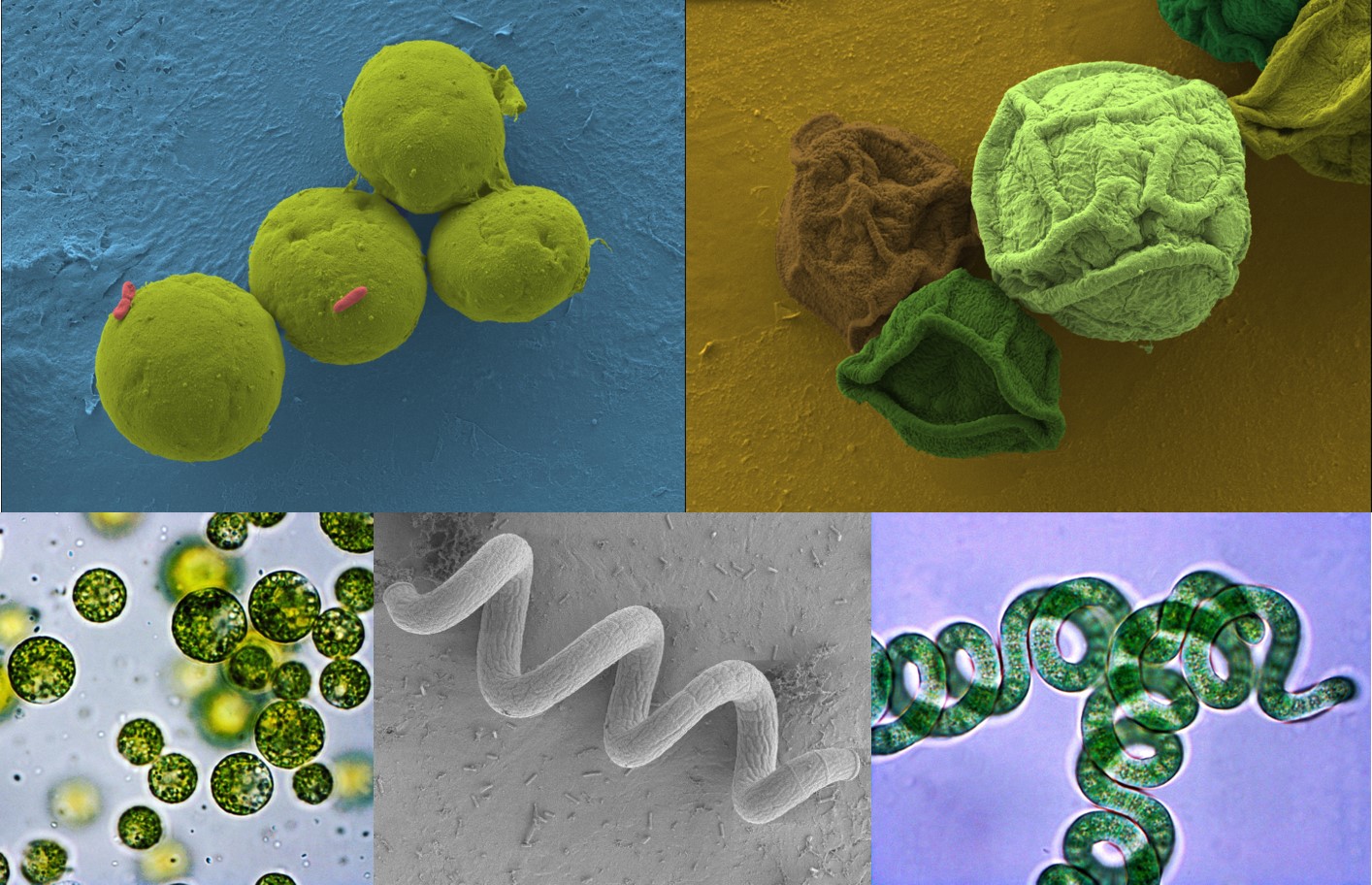
Our laboratory primarily focuses on the molecular investigation of algal-bacterial interactions and biotechnological exploitation of these interactions (hydrogen production, wastewater treatment and antimicrobial agents). We use a "multi-omics" approach involving microbiology, proteomics, genomics, bioinformatics and microscopy.
ALGAL-BACTERIAL INTERACTIONS: Molecular background and exploitation possibilities
Microalgae are microscopic, photosynthetic organisms that can grow in both fresh and saltwater environments. These versatile organisms are able to harvest solar energy and convert it into a wide array of commercially relevant products, from nutraceuticals to fuels. Biotechnological cultivation of algae, be it for biofuel or value-added products, usually focuses on monocultures. Strain optimization studies to increase yields in industrial cultures are conventionally aimed at an individual species (Smith et al. 2010). It is only recently that multi-species cultivation has received more attention (Stockenreiter et al. 2012).
It has been commonly observed that cultures containing contaminating bacteria grow better than axenic algal cultures (Andersen 2005). A survey on more than 300 species of algae showed that the majority of algal species cannot produce vitamin B12, and instead obtain it from their bacterial mutualists in exchange for photosynthetically fixed sugars. Such a mutual exchange of resources benefits both partners and concomitantly increases their growth rate and biomass production (Croft 2005). High dissolved oxygen concentrations can be toxic for most algae species, prompting photooxidative culture death (Abeliovich et al. 1972). Being in close association with a bacterial symbiont can help reduce issues like photooxidative death, as bacterial members take up the oxygen produced. This result was also identified when Chlamydomonas was grown with different bacterial species such as Rhodococcus sp. (Lakatos et al. 2014). Consumption of O2 by bacteria also raises photosynthetic efficiency by allowing Rubisco to preferentially fix CO2 rather than O2.
Mutualistic living interactions are ubiquitous. However, we are only at an early stage to resolve major patterns of complex living associations (including well-studied symbiotic settings, e.g. plant-rhizobia symbiosis). Whole-genome sequencing has recently introduced a surge of data into the field, post-genomic and systems biology approaches are also emerging as powerful techniques to investigate complex interactions, both at the molecular level of the species interface and at the global scale. Interactions affect the partners' nutrient acquisition, defense and immunity functions as well as development or reproduction. This project aims to identify if mixed cultivation approaches may be preferable to monocultures.


senior research associate

research assistant

research assistant

research associate

postdoctoral research fellow

PhD student

PhD student

PhD student

laboratory assistant
 Gergely MARÓTI
Gergely MARÓTI
|
senior research associate | publications | CV |
 Attila FARKAS
Attila FARKAS
|
research assistant | publications | CV |
 Bernadett PAP
Bernadett PAP
|
research assistant | publications | CV |
 Roland WIRTH
Roland WIRTH
|
research associate | publications | CV |
 Prateek SHETTY
Prateek SHETTY
|
postdoctoral research fellow | publications | CV |
 Vaishali RANI
Vaishali RANI
|
PhD student | publications | CV |
 Bettina HUPP
Bettina HUPP
|
PhD student | publications | CV |
 Katalin TAJTI
Katalin TAJTI
|
PhD student | CV | |
 Máté MAKRA
Máté MAKRA
|
laboratory assistant | CV |